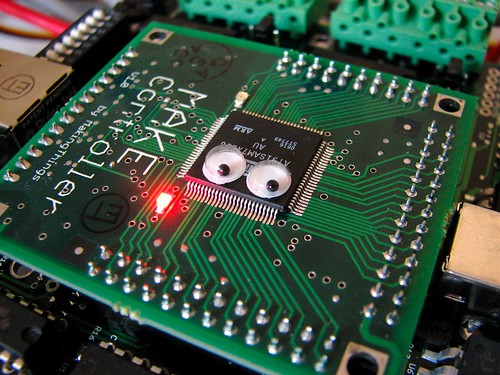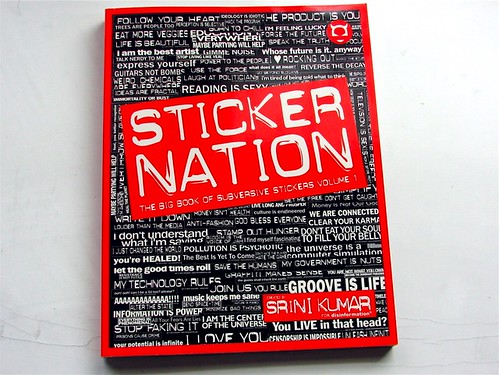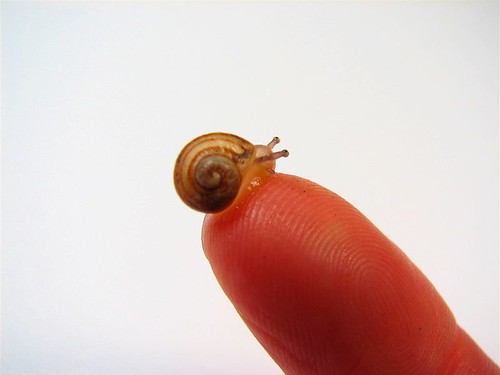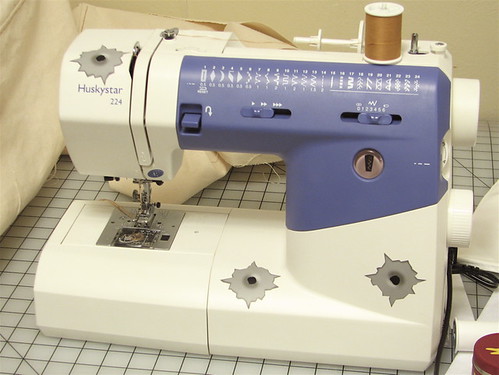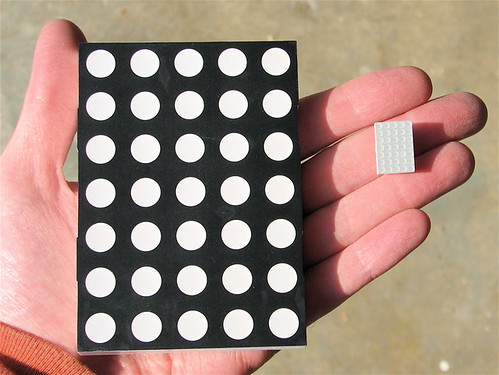This is a pretzel, and if you were asked what shape it was, you would probably say it was pretzel shaped. But (by definition) all pretzels are pretzel-shaped. Here are some other pretzel shapes that are a little less common: Pretzels for musicians, writers, gardeners, mathematicians, capitalists and Mac fanboys.
Continue reading Play with your food: Pretzels for fanboys
All posts by Windell Oskay
Upgrade your MAKE Controller
As you can see, I’ve upgraded my MAKE Controller.
I’ve long been a fan of googly eyes and of putting them in places where people don’t expect to find them. In this particular case, it’s a clear improvement, and I expect to see them included as standard equipment in future revisions of the MAKE Controller.
Along the same lines, it’s been really great to see googly eyes getting some popular attention lately in such places as the Klutz book and the Amy Sedaris Craft Challenge, which produced some amazing results– check out the flickr pool.
[Related: LabVIEW routines for the MAKE Controller]
Book review: Sticker Nation by Srini Kumar
For years we’ve admired the brilliant stickers, buttons, and shirts produced by Unamerican Activities (“quality rebellion at affordable prices”). So, when we came across a whole book about the stickers for $15 at Amazonwe though it was pretty sweet.
But what really sealed the deal was that we realized that it wasn’t just a book about the stickers but a book of stickers— 432 sweet stickers for fifteen bucks.
Continue reading Book review: Sticker Nation by Srini Kumar
Cute little snail
They come in all sizes, don’t they? This one is even acting cute.
There’s something very neat about tiny animals perched on fingertips; there’s even a flickr group on the topic.
[Related: Escargot Grand Prix, Cute Baby Animals]
Evil Little Garage Sale
I have some excess 16-segment displays, and people keep asking me where to get these. So… you can get them from me for the moment. This is a Kingbright PSA08-11HWA, a red 16-segment single-character alphanumeric LED display. It has a 20mm ( 0.8 inch) character height and a common-anode drive configuration. It’s the same one that I used for the micro-readerboard holiday ornaments as well as for our logo.
I have two unopened (new, old stock) tubes of 18 pieces each, 36 pieces total. These are getting difficult to find. But, until I run out, I’m selling the displays for $2 each plus $1 per order for shipping (US only), payment via paypal. If you’d like to buy some or all of them, E-mail me.
Update: Poof! We’re sold out. (And wow, that was fast!)
Always read the fine print
Sneak preview: The Evil Mad Scientist 3D Printer Project
Did you enjoy making sugar cube sculptures as a kid? Boy have we got a project for you.
Besides the projects that we post here each week, we’ve been working on some larger scale projects in the past year. One of these is almost done, and we’re ready to give you a sneak preview: It’s a home-built, DIY, CNC, 3D printer, that uses granulated sugar as the printing medium. This is still a work in progress, but we’re making rapid progress and we hope to show off the completed printer at the Bay Area Maker Faire in May.
(Update added 5/9/2007: we’ve got it working now.)
The printable volume is 24 x 13.5 x 9 inches, with programmed resolution of 1000 steps per axis. We expect effective pixel size to be in the range of 2-5 mm. In other words, it makes fairly large, but fairly low resolution, models out of sugar. Think of it as a way to make giant and amazing sugar cube sculptures!
Continue reading Sneak preview: The Evil Mad Scientist 3D Printer Project
Quick and Dirty D to A on the AVR: A timer tutorial
 So you’ve got a microcontroller and you want to use it to control something analog. That’s a common task, and a number of good solutions exist, depending on exactly what you need to do.
So you’ve got a microcontroller and you want to use it to control something analog. That’s a common task, and a number of good solutions exist, depending on exactly what you need to do.
Most microcontrollers do not include built-in digital-to-analog conversion (DAC) hardware, and external converters cost money. There is, however, a quick, easy, and cheap little trick of a solution that can be played by averaging a digital output.
This is a short tutorial on making useful (but crude) analog output signals with a low-cost microcontroller. The analog signals will be made by averaging a digital pulse width modulation (PWM) output from one of the counter/timer units in the microcontroller, and do not require any dedicated digital to analog conversion hardware. We will first introduce some aspects of the counter/timer and discuss how it can be used to generate the pulse width modulation signal. After that, we’ll implement the scheme on an AVR microcontroller and use it to make a simple and slow little function generator circuit.
Continue reading Quick and Dirty D to A on the AVR: A timer tutorial
Bullet hole stickers
These great bullet-hole stickers cost $5.99 for a 20-pack at stickergiant. I like to put them on almost everything. In this case, Lenore’s sewing machine.
LED Matrix Displays
Mike Kash, my physics professor at Lake Forest College, once said that he liked matrices “so much that I sleep on one.” The two
5×7 LED matrix displays shown here have pointy plastic edges and are probably not very comfortable to sleep on.
These displays are both alike in character, with the same potential to display thirty five beautiful and well-resolved pixels of bitmappy goodness. That’s just the thing for the new video standard that I’m proposing: Widescreen Ultra Low Defintion, or WULD for short. (HDTV is for wimps. 128-bit video may spark a format war with WULD, but widescreen it is not.)
It is fun to contrast the remarkably different sizes of these two displays. The one on the left is from a large readerboard, and is four inches tall with 10 mm green LEDs. The dots are almost as big as the entire miniature version, shown on the right with its 3 mm red LEDs. More common than either of these sizes are the two-inch 5×7 displays that populate the readerboards sold at office supply stores.





